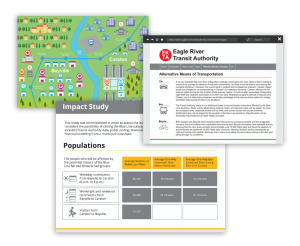Measure What Students Can Do Rather Than Just What They Know
The Benefits of Performance-Based Assessments
Multiple choice assessments have long been the standard to assess student content knowledge. However, in today’s world, students need a new set of skills — including critical thinking, problem solving, qualitative and quantitative reasoning, and written communication skills — that are not so easily or accurately measured by multiple choice.
Performance-based assessments provide students with the opportunity to apply their skills and knowledge, an approach that is more authentic and relevant than multiple choice because it captures what students can do rather than just what they know. When performance-based assessments are given multiple times throughout the school year, an authentic record of student learning and growth is created that both students and teachers can use to set goals and determine supports to achieve those goals.
However, while performance assessments are often seen as desirable by educators, there is a lingering perception that they are too costly and too difficult to administer. Thanks to technological advancements, standardized performance-based assessments can be just as easy and cost effective to administer as multiple choice tests. For example, they can be administered online, proctored remotely, and scored quickly and reliably via automated scoring artificial intelligence (AI) engines. Individual student scores can be delivered soon after completion of the assessment, if not immediately, enabling teachers to modify instruction quickly based on the insights provided.
Performance-Based Assessment in Use
A large urban school district is currently integrating performance-based assessments into their classrooms. These content-specific assessments span the K–12 curricula — including subjects in the humanities, such as the visual and performing arts, and STEM — and measure both domain knowledge and higher-order skills such as problem solving. Using content-based performance tasks that have higher-order skills integrated into the tasks addresses the need for teaching content and the skills to apply that content knowledge.
At the beginning of the school year, students are given a baseline assessment that provides instructors with information on students’ knowledge and skills after returning from summer break. Students are assessed again at the end of the academic year. In some content areas there is a mid-year benchmark assessment as well. Although these performance tasks vary somewhat in design across subject areas and grade bands, the basic structure is similar. Students are given a set of stimuli such as videos, articles, and images, usually centered around a central problem or theme, followed by a set of interrelated, gradually more complex items, usually ending with the student producing an extended response such as an essay, piece of art, or a performance.
The data from the performance-based assessments provides a deeper dimension of insight into students’ abilities and learning that teachers can use to inform instruction.
A Walk-Through Authentic Assessment Using Performance Tasks
So, what does a performance-based assessment look like? A typical performance-based assessment:
 Situates students in scenarios that mimic real-world situations
Situates students in scenarios that mimic real-world situations - Requires students to analyze, synthesize, and evaluate data and information, evaluate options, and recommend and defend a course of action
- Instructs students to support their responses by using information provided within the assessment
- Allows for more than one single “correct” answer with scores that reflect a range of plausible and effective response strategies
A research study of more than 16,000 high school students at 166 institutions who took CAE’s College and Career Readiness Assessment (CCRA+) revealed:
- Students found the performance tasks to be significantly more engaging than multiple choice tests
- Students put forth significantly more effort into the performance tasks than they did into multiple choice tests
- Students that were more engaged and put forth more effort tended to have higher scores on the CCRA+
Performance Tasks Increased Student Effort & Engagement (Zahner, Abbott, & Wren, 2017)

Sealing the Deal for Performance-Based Assessment
Educators can use performance-based assessment to better identify students’ individual strengths and opportunities for improvement in any grade level and subject area, including essential academic and career success skills. Previous barriers to use are quickly being removed and leading districts are increasingly relying on performance-based assessment to get a more complete understanding of students’ ability to apply the knowledge they’re learning.
As the definition of the skills that students need to succeed academically and in their future careers continues to evolve, assessment needs to evolve so that educators have accurate data to guide instruction and supports.
Interested in learning more about performance-based assessments? CAE offers professional development workshops; services to design, develop, and administer performance-based assessments; and our College and Career Readiness Assessment (CCRA+) — a performance-based assessment of critical thinking, problem solving, and written communication skills.
Fill out the form to request a demo and free consultation.